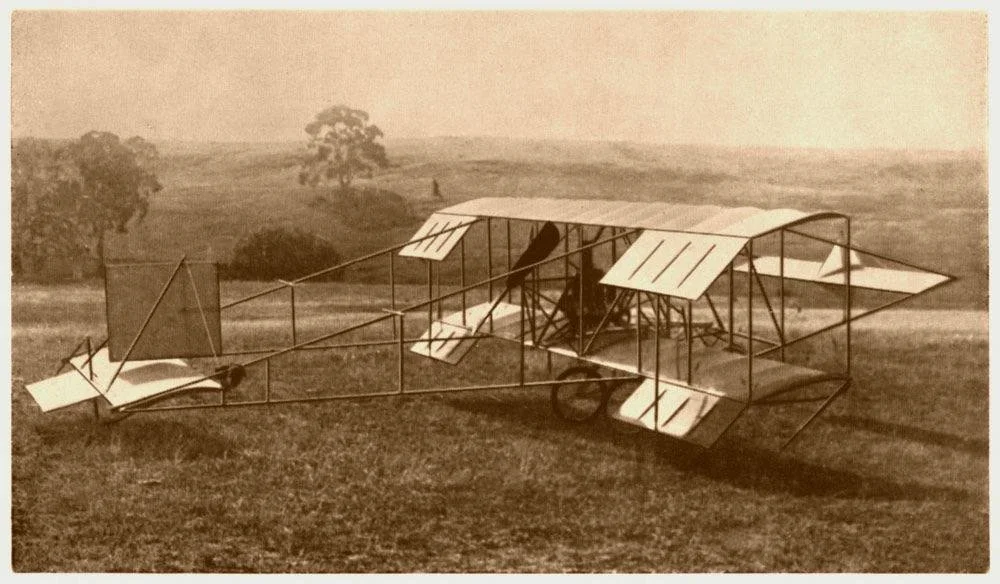You’ve got to love the spirit John Robertson Duigan shared with Wilbur and Orville Wright—fly first, then get government approval. Photo credit: Duigan’s 1910 biplane, from Reddit.
Read MoreA Hero of Australian Aviation
A Hero of Australian Aviation
By Lawrence W. Reed
One of three titles I hold at the Foundation for Economic Education is Ron Manners Global Ambassador for Liberty. Its namesake is an Australian businessman born in Kalgoorlie and residing now in Perth. Successful in gold mining and inspired by FEE’s founder Leonard Read, Ron founded a free market think tank in 1997, the Mannkal Economic Education Foundation. He and I have been friends for 40 years.
Now approaching age 90, Ron remains incredibly active on behalf of freedom and free markets. He is a model of the hard-working, risk-taking entrepreneur who champions the values that make both individuals and nations prosperous—values like inventiveness, private property, free enterprise, and strong character. For all these reasons, I dedicate this column to him. It’s about another Australian whose life reminds me of Ron.
His name was John Robertson Duigan. He was born in May 1882 in Terang and grew up in Melbourne, both in the State of Victoria. He is famous in Australian history as a pioneer aviator who built and flew the first aircraft in the country’s history.
When Americans think of the first airplane, they think of Wilbur and Orville Wright and their maiden flight at Kitty Hawk, North Carolina, in December 1903. They were two Dayton, Ohio, bicycle mechanics who financed and built the flying machine on their own, not only without government subsidies but also in direct competition with a government-funded rival. (See “Lessons from the First Airplane”).
In 1908 in the Land Down Under, John Robertson Duigan saw a postcard with a picture on it of Wilbur Wright flying in France. “I can do that too!” he thought.
But how can a 26-year-old working on a sheep ranch make such a dream happen? No one else for thousands of miles around had done it. For Duigan, though, it was like Ron Manners finding his way to success in gold mining. He just did it, thanks to persistence, ingenuity, and an economic system free enough to allow him to try.
The standard path a flyer takes is to get an aviator’s certificate (or pilot’s license) and then get a plane, but Duigan’s path was anything but conventional. After all, these were the early days of flight before governments could figure out how to regulate it.
Shortly after that postcard turned on a light in his mind, Duigan started experimenting. He built a glider first, then moved on to the real objective: a powered aircraft. His first flight, or at least the first one he considered “successful,” occurred on October 7, 1910. Two years later in Britain, he picked up his pilot’s license. You’ve got to love the spirit he shared with Wilbur and Orville—fly first, then get government approval.
Duigan and his brother Reginald were the Wright Brothers of Australia. They built the biplane that John flew for the first time exactly 115 years ago today. It was July 16, 1910. “I thought you said it was on October 7,” you protest! The discrepancy is explained this way: On July 16, the plane flew just seven meters, or about 23 feet. Being a modest guy, John didn’t want to count it as a flight. He regarded his longer and higher flight of October 7 as his first truly successful attempt. It flew at a maximum speed of 40 mph.
The achievement of brothers John and Reginald Duigan is a tribute to private initiative just like that of the Wright Brothers. They did it at their own expense. In fact, they were declared ineligible for a government prize of 5,000 Australian pounds, offered to whoever could build the first airplane adaptable to military use. It had expired a few months before, with no takers.
John’s self-taught flight experience proved useful in World War I. He saw action in France in 1917-18. While flying over Villers-Bretonneux, he was attacked by four German Fokker triplanes. He managed to land despite being grievously injured and was decorated with the British Commonwealth’s prestigious Military Cross.
In 1920, John Robertson Duigan donated his biplane to a prominent Melbourne museum, where it remains to this day. John passed away at the age of 69 in 1951. His legacy still inspires Australians more than a century since he first took to the air.
Thank you, Ron Manners, for all that you do for all the right things! I think you and John Robertson Duigan are cut from the very same cloth.
#####
(Lawrence W. Reed is President Emeritus, Humphreys Family Senior Fellow, and Ron Manners Global Ambassador for Liberty at the Foundation for Economic Education in Atlanta, Georgia. He blogs at www.lawrencewreed.com).

